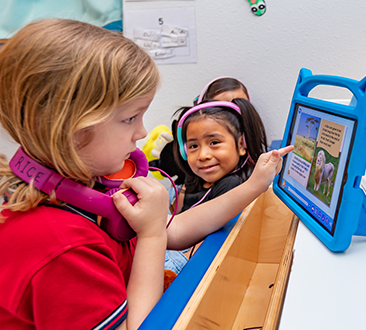The School of Science and Technology was founded with the purpose of better preparing students to excel in college through a STEM-focused education. Students who take rigorous math and science courses are more likely to attend college, and people with strong math and science backgrounds are highly employable.
Our campus teaches the Texas Essential Knowledge and Skills (TEKS) curriculum established by the Texas Education Agency (TEA) and codified in the Texas Administrative Code, Title 19 (19 TAC).





The goal of the English as a Second Language (ESL) Program is to enable English Language Learners (ELLs) to become competent in listening, reading, speaking and writing. Through the use of communicative and integrative methods of second language teaching the program focuses on the mastery of English language skills. All content (English Language Arts-Reading, Mathematics, Science, and Social Studies) area teachers adhere to the English Language Proficiency Standards (ELPS) in order to provide the necessary support to ELLs to acquire the specific content. There are two types of instructional design options in the program; content-based and pull out.
In the content-based option, an ESL certified full-time teacher provides supplementary instruction for the 4 content area classes in a structured, non-threatening environment.
In the pull-out option, ELLs spend part of the day in their mainstream classroom and are pulled out for a portion of each day to receive specialized instruction by a certified ESL teacher in a small group setting.
SST provides special education services for incoming students with an Individual Education Plan (IEP). SST will provide comparable services upon the student’s enrollment from their previous school to SST. In addition, SST will also identify students that may need special education services by providing a Full Individual Evaluation (FIE). SST follows all special education rules and regulations.
SST provides students with disabilities appropriate educational services designed to meet the individual needs of such students to the same extent as the needs of students without disabilities. An appropriate education for a student with a disability under the Section 504 regulations could consist of education in regular classrooms, education in regular classes with supplementary services, and/or related services.
Potential Qualifying Disabilities may include but are not limited to:
Services:
Helpful Resources:
SST is a tuition-free, college-prep Texas charter school system that provides rigorous, high-quality education focused on Science, Technology, Engineering, and Math to Pre-K through 12th-grade students. We have schools in San Antonio, Houston, and Corpus Christi.
© 2025 All Rights Reserved.